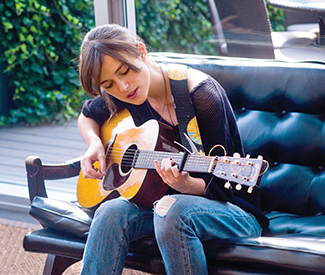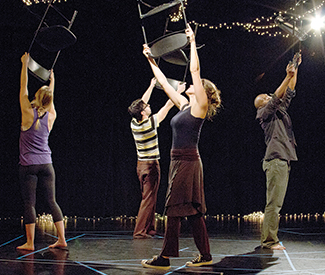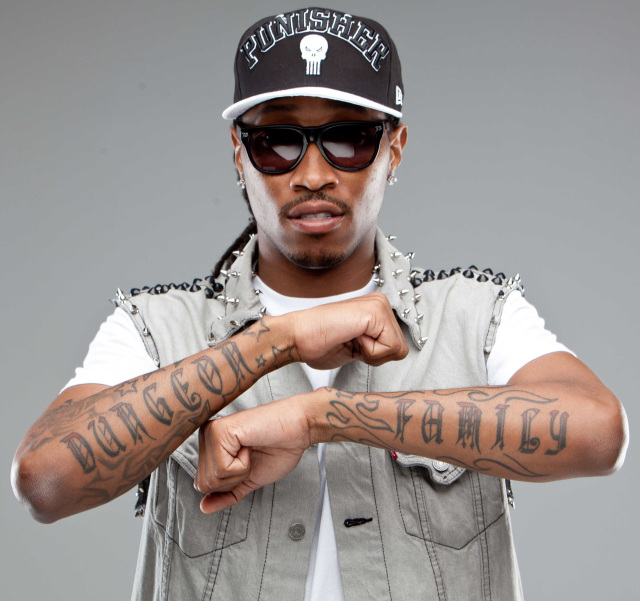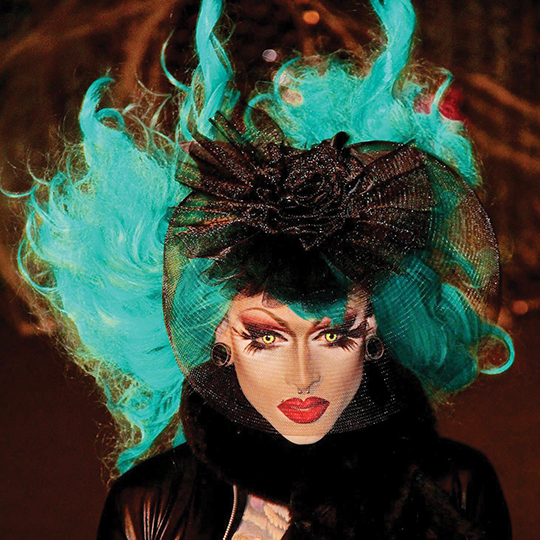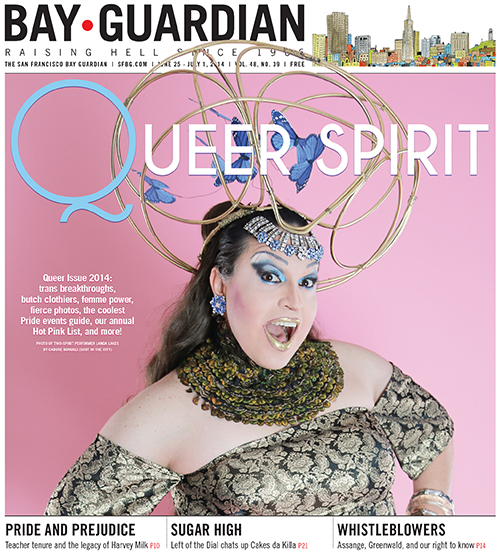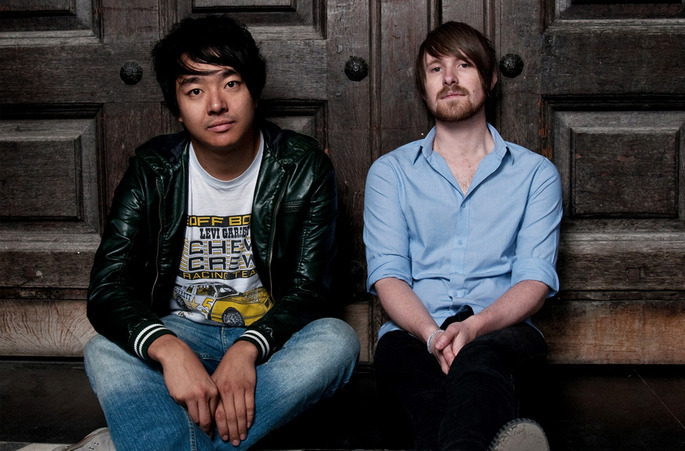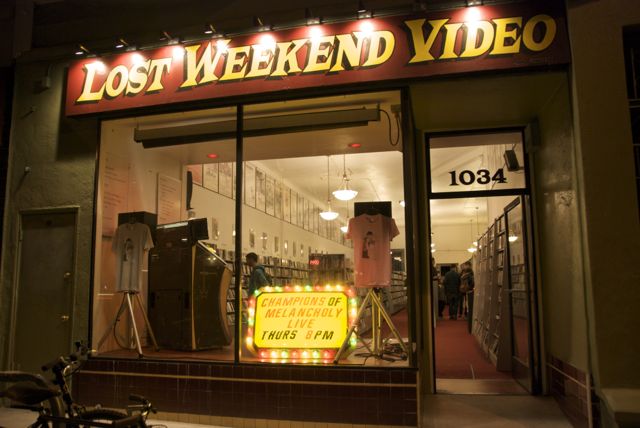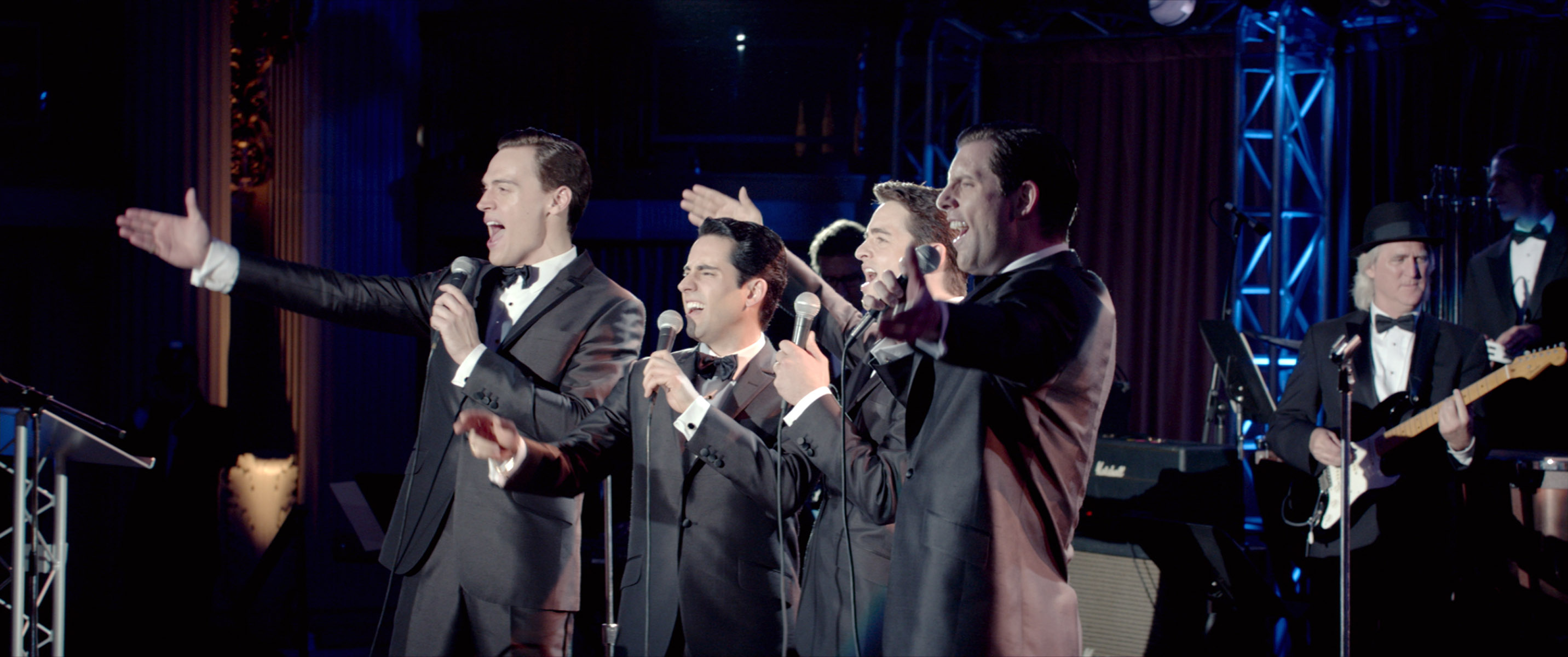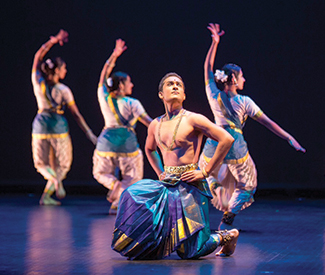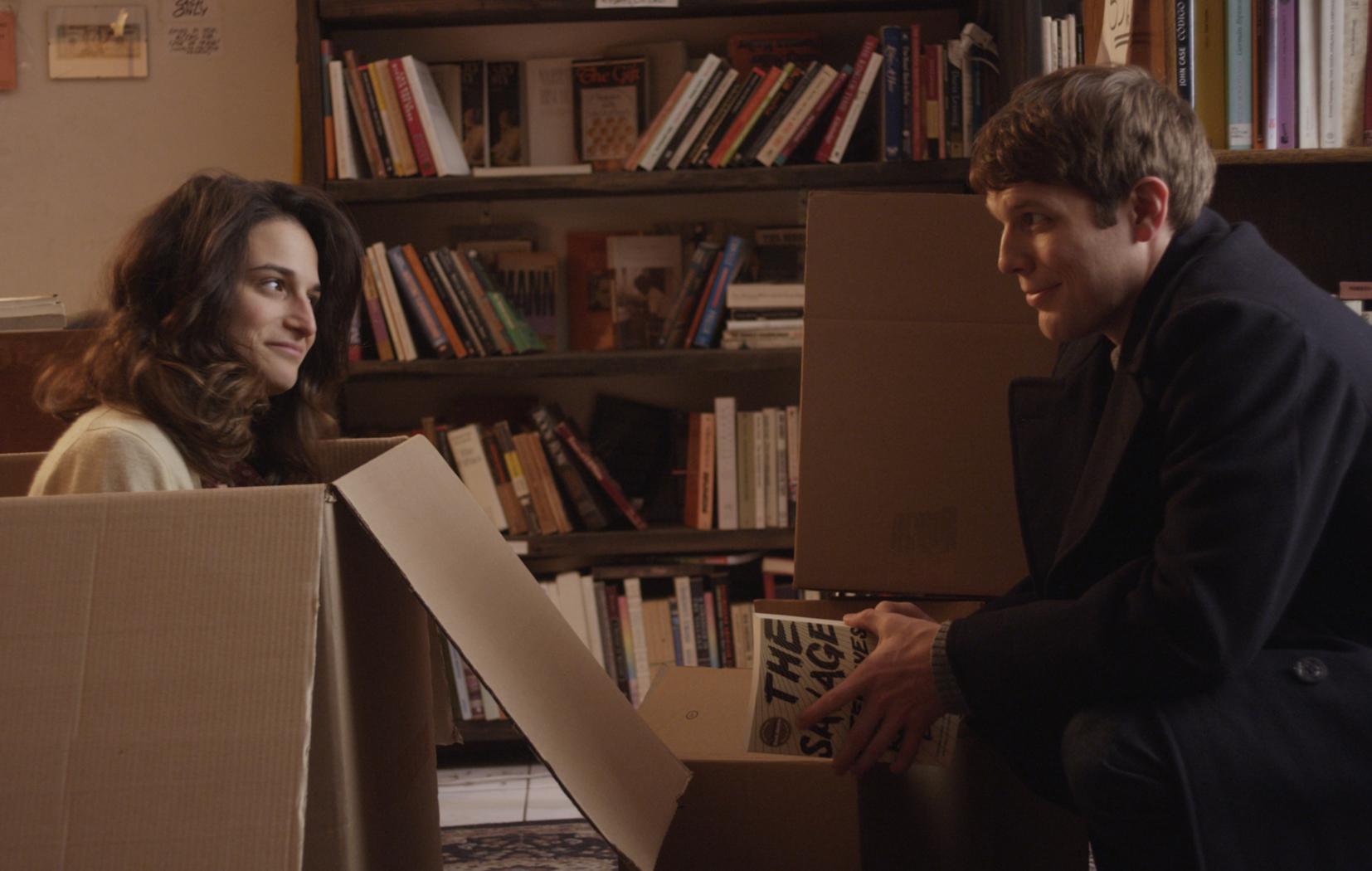Stage listings are compiled by Guardian staff. Performance times may change; call venues to confirm. Reviewers are Robert Avila, Rita Felciano, and Nicole Gluckstern. Submit items for the listings at listings@sfbg.com.
THEATER
OPENING
“Fury Factory” Z Space, 450 Florida, SF; Z Below, 470 Florida, SF; Joe Goode Annex, 401 Alabama, SF; NOHspace, 2840 Mariposa, SF; www.foolsfury.org. $16 (three performances, $39; five performances, $55). July 6-20. Festival of ensemble theater with works by Dandelion Dancetheatre, Dzieci Theatre, Epic Frame, Post Natyam Collective, Teatro Luna, the Imaginists, and others.
The Ripple Effect Dolores Park, 19th St at Dolores, SF; www.sfmt.org. Free (donations accepted). Opens Fri/4, 2pm. Runs Sat/5, 2pm. Also Sun/6, 2pm, Yerba Buena Gardens, 760 Howard, SF. Continues through Sept 1 at various NorCal venues. The veteran San Francisco Mime Troupe stays current by skewering San Francisco’s ever-dividing economy; think rising rents, tech-bus protests, and (natch) Glassholes.
BAY AREA
As You Like It Forest Meadows Amphitheater, 890 Belle, Dominican University of California, San Rafael; www.marinshakespeare.org. Donations accepted. Previews Sat/5, 8pm; Sun/6, 4pm. Opens July 11, 8pm. Runs in repertory Fri-Sun through Aug 10; visit website for specific performance dates and times. It’s outdoor Shakespeare season in the Bay Area! Marin Shakespeare kicks off its 25th season with a classic production of the Bard’s gender-bending comedy.
Pride and Prejudice John Hinkel Park Amphitheatre, 41 Somerset, Berk; www.aeofberkeley.org. Free. Opens Fr/4, 4pm. Runs Sat-Sun, 4pm. Through July 20. Actors Ensemble of Berkeley performs Constance Cox’s adaptation of the Jane Austen novel.
The Taming of the Shrew Amador Valley Community Park, Santa Rita at Black, Pleasanton; www.sfshakes.org. Free. Sat-Sun, 7:30pm. Through July 13. Continues through Sept 21 at various Bay Area venues. Free Shakespeare in the Park presents this take on the Bard’s barb-filled romance.
ONGOING
Each and Every Thing Marsh San Francisco Main Stage, 1062 Valencia, SF; www.themarsh.org. $20-50. Thu-Fri, 8pm; Sat, 8:30pm. Extended through Aug 24. The latest solo show from celebrated writer-performer Dan Hoyle (Tings Dey Happen,The Real Americans) winds a more random course than usual across the country and abroad but then that’s the idea — or at least Hoyle warns us, right after an opening encounter with a touchy young white supremacist, that the trip he’s taking us on is a subtle one. Displaying again his exceptional gifts as a writer and protean performer, Hoyle deftly embodies a set of real-life encounters as a means of exploring the primacy and predicament of face-to-face communication in the age of Facebook. With the help of director Charlie Varon (who co-developed the piece with Hoyle and Maureen Towey), this comes across in an entertaining and swift-flowing 75-minute act that includes a witty rap about “phone zombies” and a Dylan-esque screed at a digital detox center. But the purported subject of connection, or lack there of, in our gadget-bound and atomized society is neither very original nor very deeply explored — nor is it necessarily very provocative in a theater, before an audience already primed for the live encounter. Far more interesting and central here is Hoyle’s relationship with his old college buddy Pratim, an Indian American in post-9/11 America whose words are filled with laid-back wisdom and wry humor. Also intriguing is the passing glimpse of early family life in the Hoyle household with Dan’s celebrated artist father, and working-class socialist, Geoff Hoyle. These relationships, rather than the sketches of strangers (albeit very graceful ones), seem the worthier subjects to mine for truth and meaning. Indeed, there’s a line spoken by Pratim that could sum up the essence of Hoyle’s particular art: “It’s so much better,” he says, “when you find yourself in other people than when you just find yourself.” Hoyle’s real frontier could end up being much more personal terrain, much closer to home. (Avila)
Feisty Old Jew Marsh San Francisco Main Stage, 1062 Valencia, SF; www.themarsh.org. $25-100. Sat-Sun, 5pm. Extended through July 13. Charlie Varon performs his latest solo show, a fictional comedy about “a 20th century man living in a 21st century city.”
Foodies! The Musical Shelton Theater, 533 Sutter, SF; www.foodiesthemusical.com. $32-34. Fri-Sat, 8pm. Open-ended. AWAT Productions presents Morris Bobrow’s musical comedy revue all about food.
God Fights the Plague Marsh San Francisco Studio Theater, 1062 Valencia, SF; www.themarsh.org. $15-100. Sat, 8:30pm; Sun, 7pm. Through Aug 10. The Marsh presents a solo show written by and starring 18-year-old theater phenom Dezi Gallegos.
Into the Woods San Francisco Playhouse, 450 Post, SF; www.sfplayhouse.org. $20-120. Tue-Thu, 7pm; Fri-Sat, 8pm (also Sat, 3pm); Sun, 2pm. Through Sept 6. SF Playhouse performs Stephen Sondheim’s fractured fairy-tale musical.
Once Curran Theatre, 445 Geary, SF; www.shnsf.com. $45-210. Wed-Thu, Sat, and July 11, 8pm (also Wed and Sat, 2pm); Sun, 2pm (also Sun/6, 7:30pm). Through July 13. Two musicians fall in love when they begin writing songs together in this Tony-winning musical, based on the Oscar-winning film.
Pearls Over Shanghai Hypnodrome Theatre, 575 10th St, SF; www.thrillpeddlers.com. $30-35. Thu-Sat, 8pm. Extended through July 26. Five years ago, Thrillpeddlers breathed new life into a glitter-dusted piece of Sixties flotsam, beautifully reimagining the Cockettes’ raunchy mock-operetta Pearls Over Shanghai (in collaboration with several surviving members of San Francisco’s storied acid-drag troupe) and running it for a whopping 22 months. Written by Cockette Link Martin as a carefree interpretation of a 1926 Broadway play, the baldly stereotyped Shanghai Gesture, it was the perfectly lurid vehicle for irreverence in all directions. It’s back in this revival, once again helmed by artistic director Russell Blackwood with musical direction by Cockette and local favorite Scrumbly Koldewyn. But despite the frisson of featuring some original-original cast members — including “Sweet Pam” Tent (who with Koldewyn also contributes some new dialogue) and Rumi Missabu (regally reprising the role of Madam Gin Sling) — there’s less fire the second time around as the production straddles the line between carefully slick and appropriately sloppy. Nevertheless, there are some fine musical numbers and moments throughout. Among these, Zelda Koznofsky, Birdie-Bob Watt, and Jesse Cortez consistently hit high notes as the singing Andrews Sisters-like trio of Americans thrown into white slavery; Bonni Suval’s Lottie Wu is a fierce vixen; and Noah Haydon (as the sultry Petrushka) is a class act. Koldewyn’s musical direction and piano accompaniment, meanwhile, provide strong and sure momentum as well as exquisite atmosphere. (Avila)
Shit & Champagne Rebel, 1772 Market, SF; shitandchampagne.eventbrite.com. $25. Fri-Sat, 8pm. Open-ended. D’Arcy Drollinger is Champagne White, bodacious blond innocent with a wicked left hook in this cross-dressing ’70s-style white-sploitation flick, played out live on Rebel’s intimate but action-packed barroom stage. Written by Drollinger and co-directed with Laurie Bushman (with high-flying choreography by John Paolillo, Drollinger, and Matthew Martin), this high-octane camp send-up of a favored formula comes dependably stocked with stock characters and delightfully protracted by a convoluted plot (involving, among other things, a certain street drug that’s triggered an epidemic of poopy pants) — all of it played to the hilt by an excellent cast that includes Martin as Dixie Stampede, an evil corporate dominatrix at the head of some sinister front for world domination called Mal*Wart; Alex Brown as Detective Jack Hammer, rough-hewn cop on the case and ambivalent love interest; Rotimi Agbabiaka as Sergio, gay Puerto Rican impresario and confidante; Steven Lemay as Brandy, high-end calf model and Champagne’s (much) beloved roommate; and Nancy French as Rod, Champagne’s doomed fiancé. Sprawling often literally across two buxom acts, the show maintains admirable consistency: The energy never flags and the brow stays decidedly low. (Avila)
Too Much Light Makes the Baby Go Blind Boxcar Theatre, 505 Natoma, SF; www.sfneofuturists.com. $11-16. Fri-Sat, 9pm. Ongoing. The Neo-Futurists perform Greg Allen’s spontaneous, ever-changing show that crams 30 plays into 60 minutes.
The Weir Shelton Theater, 533 Sutter, SF; www.sheltontheater.org. $38. Thu-Sat, 8pm. Through July 12. Shelton Theater performs Conor McPherson’s acclaimed tale about a spooky night in an Irish pub.
BAY AREA
American Buffalo Aurora Theatre, 2081 Addison, Berk; www.auroratheatre.org. $32-60. Tue and Sun, 7pm (also Sun, 2pm); Wed-Sat, 8pm. Through July 20. It’s hard to shake the feeling, while watching Aurora Theatre’s current production, that David Mamet’s name-making 1975 play, about three smalltime crooks in a Chicago junk shop, remains his best. Its lean two-act structure, the precise nonsense of its streetwise cant, and the wonderfully layered themes of loyalty, family, and tradition among a society of cannibals all come together in a feint of a plot about a heist to retrieve a certain buffalo nickel. Barbara Damashek directs a powerhouse trio of actors in the effort: a stoical but vaguely looming Paul Vincent O’Connor as Donny, the shop’s owner; a sure and affecting Rafael Jordon as his half-addled young protégé Bobby; and a wired, wiry James Carpenter as Teach, the reckless loudmouth who stirs up the pot with disastrous consequences. While the first act feels a little careful in its unfolding, the second act develops grippingly, and overall the production conveys the nuances of Mamet’s precise language, coiled humor, and familial drama with elegant precision. (Avila)
Nantucket Marsh Berkeley MainStage, 2120 Allston, Berk; www.themarsh.org. $25-100 (all tickets include a picnic dinner). Thu and Sat, 7pm. Extended through July 19. Nantucket Island, a wisp of shifting sand 30 miles off the coast of Cape Cod, Mass., is the evocative setting for this autobiographical story from writer-performer Mark Kenward — less the tourists’ Nantucket of summer holidays, mind you, than the inhabitants’ gray and isolated winter. And just as its bleak weather stood for the tempestuous mood of Herman Melville’s Ishmael before he sets sail again in Moby Dick, so the environment for Kenward’s coming-of-age darkly foreshadows a terrible downward spiral. The only son and oldest child of two in a nuclear family from Normal, Ill., that really seemed to fit the bill — complete with a dad who, “in his entire life, only missed four days of shaving” — Mark becomes the odd-boy out upon the Kenwards’ relocation to the remote island. An affable, poised, physically demonstrative performer with a residual Midwestern charm, Kenward describes an upbringing in a household overshadowed by a high-strung, controlling, deeply unhappy mother who, as luck would have it, also becomes his high school English teacher. This relationship is the ground for much of the play’s humor, but also a trauma that blows in like a winter squall. Directed keenly, if perhaps a little too stiffly, by Rebecca Fisher, and accompanied at points by a watery island backdrop (courtesy of video designer Alfonso Alvarez), Nantucket discharges some of its messy human themes a bit too neatly but maintains an inescapable pull. (Avila)
Pygmalion 1220 Pear, Mtn View, www.thepear.org. $10-35. Thu-Sat, 8pm; Sun, 2pm. Through July 13. Pear Avenue Theatre presents the George Bernard Shaw classic.
PERFORMANCE/DANCE
Caroline Lugo and Carolé Acuña’s Ballet Flamenco Peña Pachamama, 1630 Powell, SF; www.carolinalugo.com. July 12, 19, and 27, 6:30pm. $15-19. Flamenco performance by the mother-daughter dance company, featuring live musicians.
“Dash: Improv in a Flash” Un-Scripted Theater Company, 533 Sutter, Second Flr, SF; www.un-scripted.com. Sat, 10pm. $15. Ongoing through Aug 30. A late-night, free-form improv show with Un-Scripted Theater Company.
“The Jewelry Box” Marsh San Francisco, 1062 Valencia, SF; www.themarsh.org. Wed/2, 8pm. $30-35. Acclaimed solo performer Brian Copeland performs the sequel to his hit Not a Genuine Black Man.
“Magic at the Rex” Hotel Rex, 562 Sutter, SF; www.magicattherex.com. Sat, 8pm. Ongoing. $25. Magic and mystery with Adam Sachs and mentalist Sebastian Boswell III.
“Misery Index” Rite Spot, 2099 Folsom, SF; http://miseryindexcomedy.com. Mon/7, 9pm. Free. Trevor Hill hosts this stand-up night with Scott Capurro, Leslie Small, Joey Devine, Dro Knows, and others.
“Out of Line Improv” Stage Werx, 446 Valencia, SF; outoflineimprov.brownpapertickets.com. Sat, 10:30pm. $12. Ongoing. A new, completely improvised show every week.
“San Francisco Comedy College” Purple Onion at Kells, 530 Jackson, SF; www.purpleonionatkells.com. $5-10. “New Talent Show,” Wed-Thu, 7. Ongoing. “The Cellar Dwellers,” stand-up comedy, Wed-Thu, 8:15pm and Fri-Sat, 7:30pm. Ongoing.
“San Francisco Conservatory of Dance Summer Dance Series” SF Conservatory of Dance, 301 Eighth St #270, SF; www.sfconservatoryofdance.org. Wed/2, 6:30 and 8pm. $5-10. Collaborations between dancers and musicians.
“Ten/Ten/Ten: Ten Years by Ten Artists in Ten Minutes” Costume Shop at ACT, 1117 Market, SF; www.mugwumpin.org. Mon/7, 8pm. $20. Ten performance artists help Mugwumpin celebrate its 10th anniversary with tributes to its body of work.
“This Is All I Need Costume Shop at ACT, 1117 Market, SF; www.mugwumpin.org. Wed/2-Thu/3 and Sat/5-Sun/6, 8pm. $25. The company kicks off a celebration of its 10th season with an anniversary performance of Wolfgang Lancelot Wachalovsky’s 2010 drama.
“La Traviata” free live simulcast at AT&T Park AT&T Park, 24 Willie Mays Plaza, SF; www.sfopera.com. Sat/5, 8pm. Free. The SF Opera meets the SF Giants in this free broadcast (live from the War Memorial Opera House) of Verdi’s La Traviata. Register in advance for early entry and the best seats.
“Warp Speed” Bayfront Theater, B350 Fort Mason Center, SF; www.improv.org. Sat, 8pm. Through July 26. $20. BATS Improv performs an improvised salute to Star Trek.
“Yerba Buena Gardens Festival” Yerba Buena Gardens, 760 Howard, SF; www.ybgfestival.org. Free. Through Oct 26. This week: Crosspulse, Thu/3, 11am and 12:15pm; SF Mime Troupe, Sun/6, 2pm.
BAY AREA
“Ella, the Musical” Lesher Center for the Arts, 1601 Civic, Walnut Creek; www.centerrep.org. Wed/2, 7:30pm; Thu/3 and Sat/5, 8pm; Sun/6, 2:30. $37-65. Center REPertory Company presents Yvette Carson as the legendary vocalist Ella Fitzgerald.
“MarshJam Improv Comedy Show” Marsh Berkeley, 2120 Allston, Berk; www.themarsh.org. Fri, 8pm. Ongoing. $10. Improv comedy with local legends and drop-in guests.
“Virago Theatre Company New Play Reading Series” Flight Deck, 1540 Broadway, Oakl; www.theflightdeck.org. Wed/2, 7pm. Free. This week: A Routine Procedure by Deborah Dashow Ruth. *

